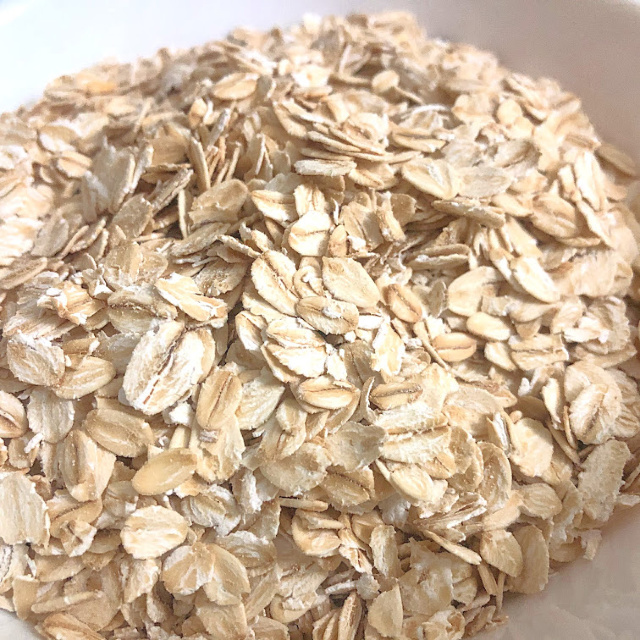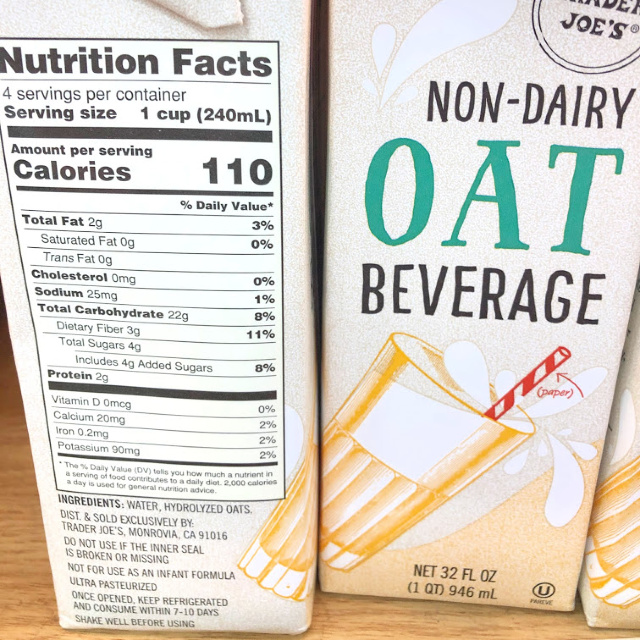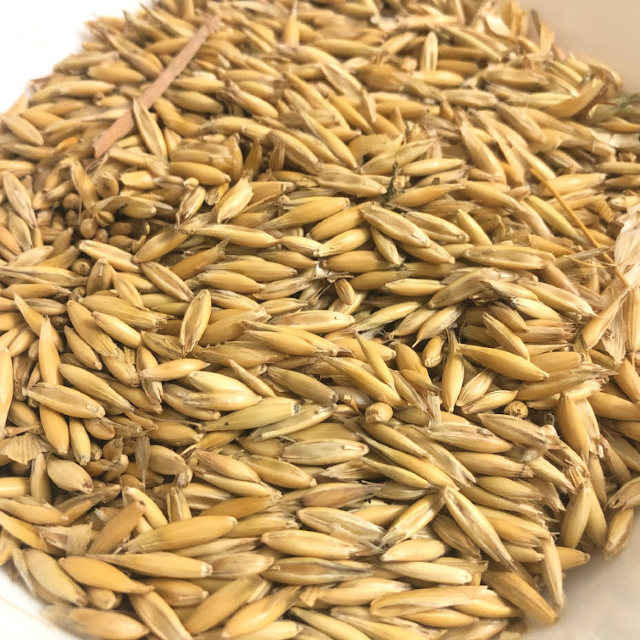Happy National Oatmeal Day! Well, sort of. As a gluten-free person, it’s not always possible to be happy about oatmeal. Today I want to share with you how to choose what oats to eat if you must be gluten-free. I know this is confusing. I also know this is important to those of us who must eat a gluten-free diet. I want to help you gain an understanding of what it means when someone refers to oats as regular, mechanically/optically sorted, certified gluten-free and purity protocol.
- Regular Oats: Regular oats are the most common found on store shelves. No gluten-free marking. These are NOT grown in dedicated fields, the seeds planted are likely not from a purity seed stock. The oats are harvested, transported, milled and packaged on shared equipment with gluten-containing grains. This type of oats is only suitable for someone who has no issues with gluten. This variety of oats were found to contain as much at 1807 parts per million gluten when tested by Gluten Free Watchdog. This is much higher than the allowed 20 parts per million gluten required for a food to be labeled gluten-free.
- Mechanically/Optically Sorted Oats: These are oats grown just like the “Regular” oats detailed above. The difference is that they are sorted by humans or by machinery in an attempt to remove any errant grains. Picture trying to use a giant sifter to remove grains that look quite similar in an attempt to eliminate gluten. This is the type of oats first widely used in Cheerios and now being used in many products labeled and even certified gluten-free. Bob’s Red Mill is another example of oats labeled gluten-free that are Sorted. It was with the introduction of sorted oats that many in the gluten-free community who had previously tolerated certified gluten-free oats found themselves reacting to oats.
- Certified Gluten-Free Oats: This term is the most misleading and confusing of the oat categories. Many wrongly believe that certified gluten-free oats and certified gluten-free products that contain oats must contain oats grown using a purity protocol (detailed below). That is NOT the case. There are many certified gluten-free products that use Mechanically/Optically Sorted Oats. To make this more confusing, Purity Protocol Oats are also certified gluten-free. Yep, that’s right: both Sorted oats and Purity Protocol oats can be certified gluten-free.
- Purity Protocol Oats: Purity Protocol Oats are grown in dedicated fields with a buffer zone from any gluten-containing crops. The crop is harvested, transported and milled on equipment that does not process anything containing gluten. Pure seed is used to plant the crop, testing is done before the harvested oats enter the mill, while they are being packaged with testing results verified by an independent lab. These are the most carefully grown, harvested, milled and packaged of all oats and considered the safest for those who cannot eat gluten.
Still confused? Completely understandable.
It used to be that we put a lot of faith in products labeled gluten-free, even more in products that carried a gluten-free certification. Then the situation surrounding oats became very complicated, right about the time Cheerios started using Sorted oats. In addition to using Sorted oats, Cheerios continues to use very questionable testing methodology, along with every box having the Celiac Disease Foundation logo on it. Many think this logo is a gluten-free certification. It is not. To make it more confusing, companies who had used Purity Protocol oats, like Bob’s Red Mill, quietly switched to Sorted oats without saying a word. And then in recent months, more and more companies have started adding oats into gluten-free products that have never contained oats at all, leaving gluten-free consumers like me and you to track down information regarding the source of the oats.
Like many gluten-free advocates, I’ve spent hours attempting to track down the source of oats in many products labeled gluten-free, including products that carry a gluten-free certification. The most frequent response when a company is asked about the source of oats in their “gluten-free” product: CRICKETS. No response at all. The lack of response is the same as telling me they are using Sorted oats. I stop buying the product.
Then there are the other let downs, like the recent discovery that King Arthur has added oat flour to some of their mixes. While I am a scratch baker, I’ve recommended their mixes to so many who either don’t enjoy baking or don’t have time. Now some of the mixes contain oat flour AND King Arthur has acknowledged the source is Sorted oats. Now not only the mixes that contain oat flour but everything made on the same lines is at risk of exposure to gluten-containing grains. Bye, divine little brownie cups…
Coffee houses have begun introducing oat milk as a dairy-free alternative, some even replacing other dairy-free milks with oat milk. I’ve been searching, but have yet to find a commercial oat milk made with Purity Protocol Oats. And because this is not complicated enough, testing any hydrolyzed or fermented food for gluten is challenging. Commercial oat milks contain hydrolyzed oats. Without an accurate way to test for gluten, if these are made with Sorted or Regular oats, we don’t know if they are safe and must assume they are not.
I visited a dedicated gluten-free brewery recently that had a few beers made with oats, all well labeled on their menus apparently for the 5% of people with Celiac disease who have avenin resistance and tolerate no oats. When I asked about the source of their oats, they didn’t know and promised to get back with me. Even trying to track down the oat sourcing information from their supplier has left me with no information, no idea if the oats are safe for those with Celiac or other medically necessary gluten-free diets. It just keeps getting more challenging with oats popping up everywhere.
So what do we do now? In Canada, Cheerios can no longer be labeled gluten-free. In a handful of countries, no product that contains oats can be labeled gluten-free. But here we are in America, we are the Wild Wild West of supposed gluten-free products. My suggestion: Listen to those who understand proper testing and growing procedures. Ask questions from those who take your dollars in exchange for oats and oat-containing products. Stop spending money with them and stand together with your gluten-free community to insist that we have safe options. Before donating to any of the Celiac organizations, ask if they are certifying Sorted oats or if they will only certify Purity Protocol oats. We’ve got work to do and it’s going to take all of us to impact change.
Resources:
Read more about Cheerios here. And here. And here. And here. Please, read it all. This cereal makes people who tolerate Purity Protocol Oats sick. Think it’s just coincidence? Or could it be Sorted oats?
Why Gluten Free Watchdog Loses Sleep Over Sorted Oats
A List of Purity Protocol Oat Providers and Products
Photo below is unmilled oats harvested from a friend’s farm in Iowa. These are not purity protocol oats. Can you spot errant gluten-containing grains?




I ate a bowl of Bobs Red Mill oatmeal a few weeks ago and did I ever get heartburn. I have pain with mine not burning in my throat . I threw out what was left in the bag I used , but I had purchased another one before my reaction, so now I will not use that one . I will donate it. I do not tolerate grains very well . So I eat them very sparingly. I’m not Celiac , but have Gluten Intolerance .
It’s sad that Bob’s Red Mill, a company so many have trusted, changed to Sorted oats. I’m glad you could identify the problematic food.
Bless you for what you do. Thank you.